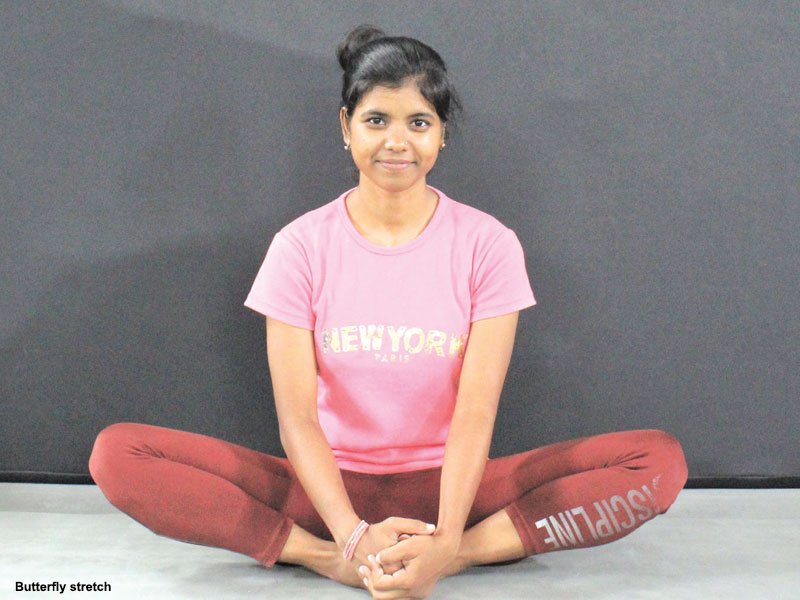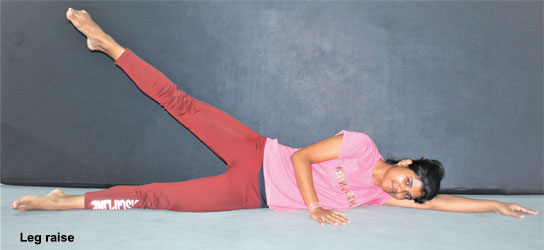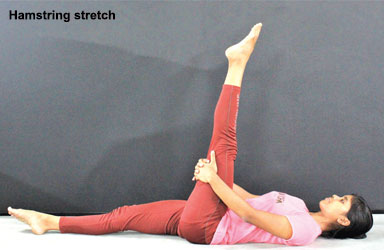Working out at home without supervision and proper equipment has its perils. And one of the most common complaints of people of all age groups exercising at home is knee pain – Monojit Ghosh

– Monojit Ghosh is a former national level gymnast and fitness trainer/coach at Art Corner Gymnastics, Bengaluru
Although under Unlock 4.0 the Central government has allowed the reopening of gyms and fitness centres, most people are hesitant about visiting them, preferring to exercise indoors at home. Living room hops, skips and jumps and spot running are all great ways to keep fit. But working out at home without supervision and proper equipment has its perils. For instance, most people are unaware that exercising on a hard floor tends to cause pain in the heels and knees. Indeed, the most common complaint I hear from adults as well as adolescents exercising at home is: knee pain.
“The knee is one of the largest and most used joints of the body. It is the immediate and most important connection between the ankles and hips. While ankles and feet are the first-level contact of any stress, the knee joints are force dissipaters,” says Dr. Lavanya P. Kumar, sports scientist and physiotherapist at the RNR FIT-Gymnastics Academy, Bengaluru.
 According to Dr. Kumar, when the knee joints are subjected to stress and strain over a period of time, it results in wear and tear of the cartilage surrounding the bony structures, femur, tibia and patella. This in turn leads to early degeneration or a type of arthritis of the cartilage around the articulating surfaces of femur and tibia. “Sometimes, the cause of knee pain can also be tightness of the muscles that attach to the bones near the articulating surface. When these muscles pull on the attachment, there can be sharp knee pain that can limit us from performing our daily activities,” says Dr. Kumar.
According to Dr. Kumar, when the knee joints are subjected to stress and strain over a period of time, it results in wear and tear of the cartilage surrounding the bony structures, femur, tibia and patella. This in turn leads to early degeneration or a type of arthritis of the cartilage around the articulating surfaces of femur and tibia. “Sometimes, the cause of knee pain can also be tightness of the muscles that attach to the bones near the articulating surface. When these muscles pull on the attachment, there can be sharp knee pain that can limit us from performing our daily activities,” says Dr. Kumar.
Knee pain afflicts people of all ages. However, children and adults who are physically active such as athletes and fitness enthusiasts as well as the overweight and obese are more prone to experiencing knee pain. Teens and preteens are also susceptible to knee pain because of overuse, an imbalance in muscle strength and flexibility, and growth-related diseases.
Another likely cause of knee pain is excessive exercise and improper exercise techniques. For instance, sudden twists, inappropriate or failed attempts in landing on the ground during a workout exercise can cause nasty injuries such as knee dislocation, ligament tears, fractures, and bone bruises. Exercises such as running and jumping most often cause general knee pain.
Dr. Kumar advises children and adults experiencing knee pain to do a simple test exercise to ascertain if it’s an inflammation or structural damage. “If you are able to extend your knees straight without pain, it’s an inflammation. It’s structural damage if it hurts and the knees are visibly swollen or you are not able to get into a squatting position with your knees at 90-degree angles,” explains Kumar.
Preventing knee pain/injury
- Maintain healthy body weight
- Wear supportive and well-fitted shoes during exercise
- Do gentle stretching exercises to strengthen muscles that support the knees
- Don’t kneel on hard surfaces without knee pads or cushions
- Always exercise on a rubber mat.
- It’s time to visit a doctor if knee pain lasts longer than two weeks and you are walking with a limp.
Exercises to alleviate knee pain
Stretching exercises focused on the calf, hamstring, and quadriceps muscles take pressure off the knees and kneecaps. Start this workout slow and then ramp it up.
Step ups. Stand in front of a flight of steps or a raised platform and place one leg on the step. Keeping one foot on the step, place the other foot down on the floor. Now start step ups with alternate legs.
Straight leg lifting. Lie down on your back and stretch out your legs fully and hands sideways. Now start leg raises — keep your legs straight. You can also do leg raises lying on your side. Do at least 15 for each leg.
Squats. Stand straight with feet apart, making sure your feet and toes face forward. Hold your hands forward at shoulder level. Then start bending your knees as if you are going to sit in a chair and get up again. If you find it painful, try to do it with a chair.
 Lunges. Keep your upper body straight with chin up and keep one leg at the back and one in front. Bend the forward knee at 90 degrees and keep the back leg as straight as possible. Jump and switch legs.
Lunges. Keep your upper body straight with chin up and keep one leg at the back and one in front. Bend the forward knee at 90 degrees and keep the back leg as straight as possible. Jump and switch legs.
Hamstring stretch. Lie on your back with legs stretched forward. Now lift one leg up and hold the back of your knee with both hands, and pull the leg towards your chest. Slowly straighten the knee until you feel the stretch. Hold for 20 to 30 seconds.
Butterfly stretch. Sit on the floor with your legs bent and both feet facing each other. Then try to press your knees down towards the floor or slowly swing your knees up and down.
NB: It is important to warm up and stretch before exercising and to ice the knees after the workout if you have pain.
Also read: Challenge your child to a workout!


























